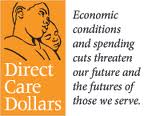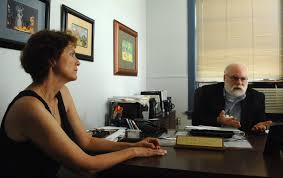5 Things Non Profits can Strengthen in 2014
By Dani Robbins
Re-published with permission from nonprofit evolution blog
 As I’m sure you aware by now, I like to reflect back on things that have occurred and create a plan to avoid their reoccurrence. As such, I’ve been thinking about things our field can do to be stronger.
As I’m sure you aware by now, I like to reflect back on things that have occurred and create a plan to avoid their reoccurrence. As such, I’ve been thinking about things our field can do to be stronger.
1. Build Better Boards
You’ve seen me write it before and it’s still true, everything flows from the board. Weak boards hire weak leaders who manage weak agencies. Sometimes it goes the other way, weak boards hire strong leaders who do whatever they want because the board is asleep at the wheel. Neither contributes to effectively governed agencies.
Strong boards hire strong leaders who build strong agencies.
For more information on building strong boards, please see previous posts on board development.
2. Create Succession Plans
Agencies that have great leaders need to plan for that leader’s transition as much as agencies with weak leaders. In fact, and among other things, one of the signs of a great leader is the strength of the agency once they’re gone.
Whether your exec gets fired, wins the lottery and moves to Jamaica, or retires after decades of excellent service, your board will need a plan to hire a new leader.
The Anne E. Casey Foundation’s Building Leaderful Organizations and the Federal Reserve Bank of Kansas City’s Nonprofit Executive Succession Planning Toolkit, offer a comprehensive look at planning. Each may be much broader than you need, but both can help you figure out what you need.
3. Build Capacity
Most agencies and most leaders, even and especially the ones that are great, can continue to build their capacity. Whether you have experienced tremendous growth, have a new leader, have downsized and now want to rebuild or if you just want to increase your strength, capacity building is the way to go.
Some larger national organizations have proprietary capacity building tools. If you are a part of a national organization, ask if such a thing has been created. If it has, use it. If it hasn’t, suggest it is.
For those of you who are standing alone, The Marguerite Casey Foundation’s Organizational Capacity Assessment tool is the best and most comprehensive I have seen. “It is a self-assessment instrument that helps nonprofits identify capacity strengths and challenges and establish capacity building goals. It is primarily a diagnostic and learning tool” that was designed to help agencies serving low income communities. Even if your agency has nothing to do with that community, this tool can help your agency be stronger.
4. Consider Mergers
There are lots and lots of organizations out there, some doing very similar work with very similar values. If your agency is struggling, is strong or you have a leadership transition, it might be a good time for your board to consider merging with another organization. The decision may be no, but it is an option worth putting on the table.
Again, some larger national organizations have merger tools. If you are a part of a national organization, ask if such a thing has been created. If it has, use it. If it hasn’t, suggest it is.
For those of you who are standing alone, I encourage you to reach out to your local community foundation or local nonprofit resource center for assistance. Here are a few links for your consideration:
Bridgespan’s Nonprofit M&A: More Than a Tool for Tough Times
Wilder Research’s What do we know about nonprofit mergers
And from the Nonprofit Finance Fund, a report with the same title What do we know about nonprofit mergers.
The larger our field grows, the more we will compete for limited resources. Can we be stronger together?
5 Get Better at Communicating with Donors
I am consistently surprised by the way some non profits communicate with their donors, or don’t, as the case may be. Here are some questions for you to assess your donor communication practices:
- Do donors receive a formal thank you note, on letterhead, that includes the amount of their gift within 48 hours of your receipt of their gift, regardless of the gift amount?
- Does it include the appropriate IRS language?
- Does someone call to say thank you to your largest donors?
- Does your Exec or a member of your board call those donors periodically to update them on the agency’s activities?
- Do you have a gift acceptance policy?
- Do you have a development plan?
If the answers is no to any of these questions, that is a great place to ramp up your practices.
For more information on resource development, please see previous development posts and Donor Dreams, for which I also blog.
The non profits in my community and communities across the country and the world are moving the needle on the issues they exist to impact. With on-going assessment, the implementation of best practices and constantly striving to be better and do better we can continue to make our world better.
How do you think we can best strengthen our field? As always, I welcome your insight, feedback and experience. Please share your ideas or suggestions for blog topics and consider hitting the follow button to enter your email. A rising tide raises all boats.


 Welcome to O.D. Fridays at DonorDreams blog. For the last few years, we’ve looked at posts from John Greco’s blog called “
Welcome to O.D. Fridays at DonorDreams blog. For the last few years, we’ve looked at posts from John Greco’s blog called “ Here are just a few examples of what those situations looked like:
Here are just a few examples of what those situations looked like: The definition of the word “grace” according to a Google search is: “simple elegance or refinement of movement“.
The definition of the word “grace” according to a Google search is: “simple elegance or refinement of movement“. Welcome to O.D. Fridays at DonorDreams blog. Every Friday for the foreseeable future we will be looking at posts from John Greco’s blog called “
Welcome to O.D. Fridays at DonorDreams blog. Every Friday for the foreseeable future we will be looking at posts from John Greco’s blog called “ As the years passed, Larkin Center added more services including a school for children struggling with behavior disorders and counseling services for adults.
As the years passed, Larkin Center added more services including a school for children struggling with behavior disorders and counseling services for adults. There will be lots of news coverage about the “failure“. Many people will weigh-in with what they think went wrong and what could’ve and should’ve been done differently. There might even be a victory lap taken by a few Elgin city council members who openly fought with Larkin Center because they didn’t think “those kids” belonged in our community.
There will be lots of news coverage about the “failure“. Many people will weigh-in with what they think went wrong and what could’ve and should’ve been done differently. There might even be a victory lap taken by a few Elgin city council members who openly fought with Larkin Center because they didn’t think “those kids” belonged in our community. When I think about the donors who invested in efforts to save this organization in the final months and years of its life, I want to honor those efforts.
When I think about the donors who invested in efforts to save this organization in the final months and years of its life, I want to honor those efforts.


 For the last few weeks, I’ve found myself in a number of non-profit boardrooms talking to board volunteers about a variety of difficult subjects. These difficult conversations covered the following areas uncomfortable areas: staff reduction, re-organization, service reduction, radical revenue enhancement, board transformation, and so on. In each instance, it felt like a “soul-searching” discussion . . . very big and very weighty. I found myself wishing for a magic pill that I could dispense that would make their path forward a little less difficult.
For the last few weeks, I’ve found myself in a number of non-profit boardrooms talking to board volunteers about a variety of difficult subjects. These difficult conversations covered the following areas uncomfortable areas: staff reduction, re-organization, service reduction, radical revenue enhancement, board transformation, and so on. In each instance, it felt like a “soul-searching” discussion . . . very big and very weighty. I found myself wishing for a magic pill that I could dispense that would make their path forward a little less difficult. So, one organizations might find some comfort in their shared values of:
So, one organizations might find some comfort in their shared values of:


